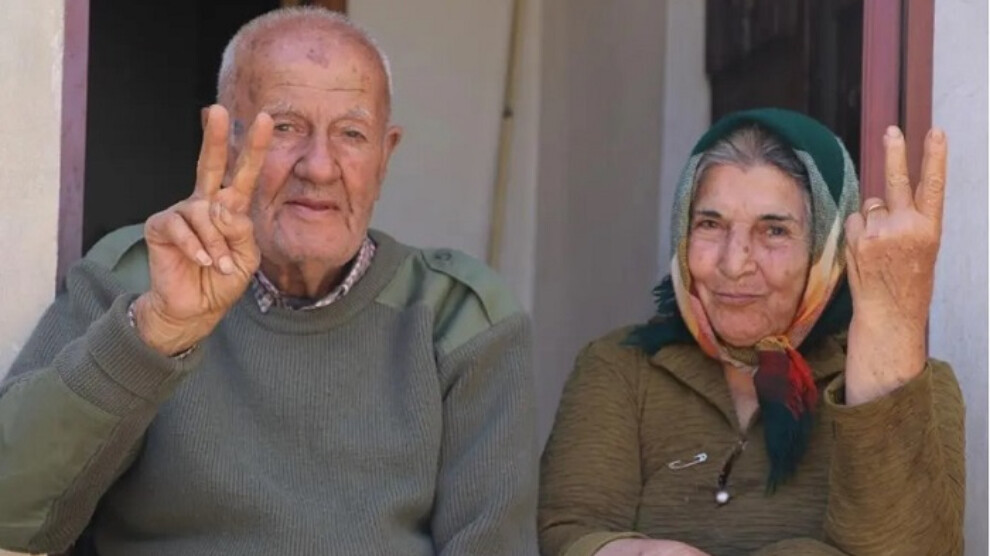Armenian couple refuses to leave their village in Til Temir despite Turkish attacks
Despite ongoing Turkish bombing, Armenian couple Khoshaba and Ailshwa remain faithful to their village of Tel Juma’a.
Despite ongoing Turkish bombing, Armenian couple Khoshaba and Ailshwa remain faithful to their village of Tel Juma’a.

Despite the continued violent Turkish bombing of Syriac villages in the Khabur Valley, Armenian Khoshaba Ibrahim and his wife Ailshwa Sha’bo remain loyal to their home in the village of Tel Juma’a, in the countryside of Til Temir (Tal Tamr).
Speaking to the Syriac Press, the couple said, “We have nowhere else to go. We have witnessed three massacres; the Simele massacre in Iraq, 2015 massacres of the Islamic State (ISIS) and the current Turkish massacres.”
Born in 1934, a year after the Simele massacre, Ibrahim declared that the Armenian and Chaldean-Syriac-Assyrian families had suffered greatly from the massacres in Iraq that sought their destruction, forcing them to take refuge in Syria to build a new life here in the villages of the Khabour valley.
“Islamic State reminded us of the Simele massacre where our sacred values and sanctuaries were violated, our churches were demolished, and our relatives were kidnapped and killed,” Khoshaba Ibrahim said. “The aim of ISIS was to expel us again. The Turkish bombing continues, but we will stay here and we will die here,” he stated firmly.
His wife, Ailshwa Sha’bo stated that residents of the village used to shelter inside the church during the Turkish bombing, and that fear had become part of their daily life. “Not a large number of villagers are left, but we will stay steadfast and adhere to our homeland,” she also stated firmly.
The history of Til Temir
The Khabur river extends along the Khabur valley in the northeast of Syria. Here, where the town of Til Temir (Kurdish name: Girê Xurma), a reflection of the population mosaic of Syria, is located, the Nestorians - Assyrians from (Hakkari - who had fled to northern Iraq during the genocide of Christians in the Ottoman Empire between 1914 and 1918, settled in 1933. The League of Nations in Geneva awarded them the settlement area. Their second exodus was preceded by the Simele massacre: some 9000 Assyrians, mainly men and young people, were murdered in various villages in the Duhok region. The village of Simele, which was particularly affected, gave its name to this genocide. There, under the leadership of the Iraqi military, some 350 people died.
The Assyrians from Hakkari founded 33 villages in the flat valley of the Khabur, while Chaldean Christians settled in another three villages. Before the beginning of the Syrian war in 2011, about 20,000 Assyrian Christians were still living here, in almost every village there was a church. Now there are not even 1,000 people left. Because of the jihadists almost all inhabitants fled abroad, most went to Canada, Australia or the US. Some of the villages are completely empty, those who stayed are mostly elderly people. Also, several hundred internally displaced persons from other regions of the country now live in Til Temir.